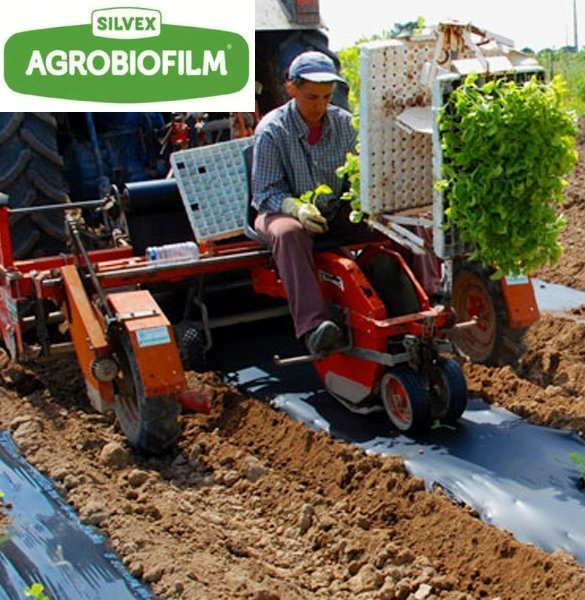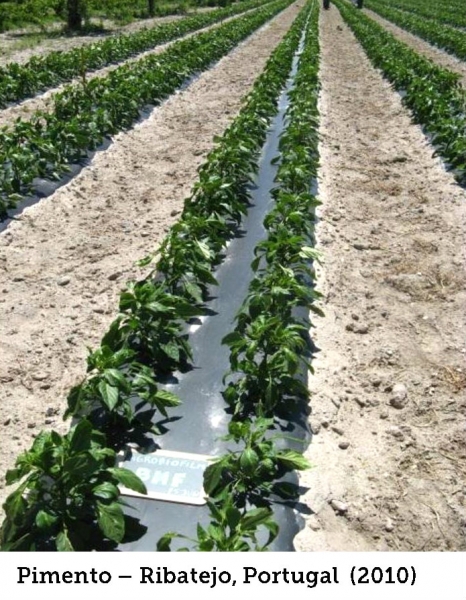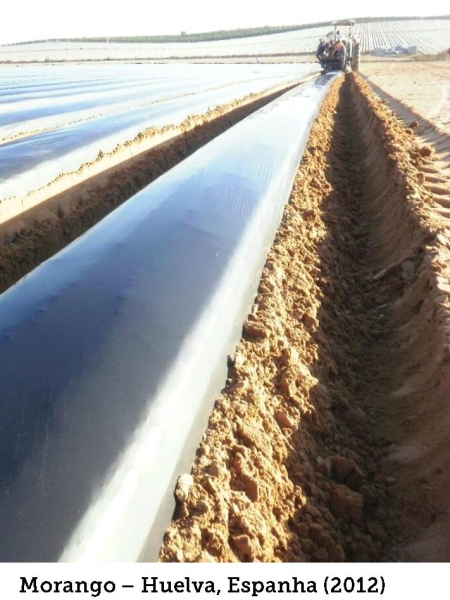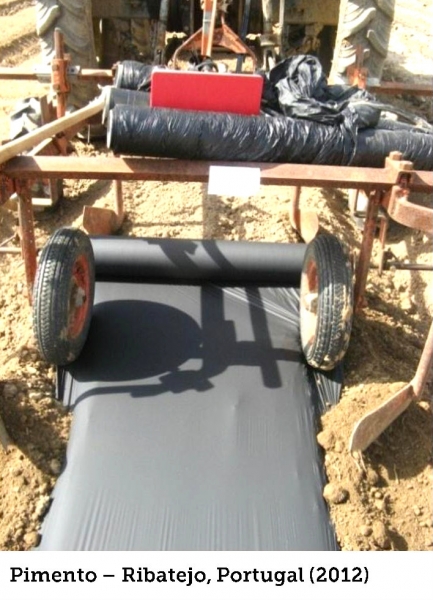-
ORGANIC AGRICULTURE
- AGROBIOFILM
- RECTIFIER VACUUM CLEANER
- DISPOSABLE PLASTIC BOX
- HARVESTERS FOR AROMATIC AND MEDICINAL PLANTS
- UNWINDER WATERING TAPE
- MANUAL. SEEDER
- HYBRID SOLAR DRYERS FOR AROMATIC PLANTS AND FOOD
- MULTI-SEED MECHANICAL SEWER.
- BIG GRAIN SEEDER
- HEATING SYSTEMS FOR INDUSTRIAL WAREHOUSES
- SYSTEM FOR COLLECTING PARSLEY
-
ENVIRONMENT
- RAINWATER
- RETENTION BASINS
- SANITARY BOOTHS
- BATTERY CASES
- SAMPLING BOX
- SCREENING BOX
- TANKS FOR INDUSTRIAL CLEANING
- TOOLS BOX
- SELECTIVE COLLECTION CONTAINER
- TANKS WITH LIDS DCT
- DOSING TANKS DSD
- HORIZONTAL TANKS DHE
- HORIZONTAIS TANKS DHS
- VERTICAL TANKS DVA/DVB/DVBR
- ECOFLO-COCONUT COMPACT FILTER
- ECOIL-USED OILS TANKS
- ECOPROCESS TM
- PUMPING STATIONS
- SEPTIC TANKS MILENIUM
- COMPACT SEPTIC TANKS
- SIMPLE SEPTIC TANKS
- MICRO-ETAR SOLIDO SMART
- BEACH CLEANING MACHINE
- GREASE SEPARATOR
- HYDROCARBON SEPARATORS
- SUPERFUSTO
- DRUM SUPPORT
- INDUSTRIAL SCALE
- PUMPS FOR FUELS
- CONTENTOR - OFICINA
- DIESEL DEPOSIT
- WEEDING THERMAL ECO
- WASHING EQUIPMENT
- FORAGER EQUIPMENT
- FRUTICULTURE
- DRY FRUITS
- GPS AGRICOLAS
-
HORTICULTURE
- FERTILIZER LOCATOR
- BED FORMER AND PLASTIC FIXER
- ROTATING CULTIVATOR
- POTATO DIGGERS
- RECTIFIER VACUUM CLEANER.
- POTATOS LOADER
- CARROT HARVESTER
- ONION LOADER
- CITRUS HARVESTER
- DISPOSABLE PLASTIC BOX..
- VEGETABLE HARVESTER DI PIETRI
- VEGETABLE HARVESTERS ORTOMEC
- VEGETABLES HARVESTER
- GARLIC CULTURE
- PLASTIC DISPENSERS MACHINE
- SOIL DISINFECTION BY STEAM
- FURROW OPENER
- KITAPE
- FLAME WEEDING
- MULTIFRAS
- POTATO PLANTER
- PRE-BED FORMER
- MACHINE FOR COLLECTION IRRIGATION HOSE
- RECOLHEDORA DE PLÁSTICO AGRICOLA
- AUTOMATIC HOE
- WEEDING MACHINES
- SYSTEM FOR COLLECTING PARSLEY.
- TRANSPLANTERS
- SIDE CONVEYOR BELT
- MOBILIZATION OF SOIL
- LIVESTOCK
- POLISHER
- SPRAYERS
- SOWING
-
FORESTRY
- ANGLODOZERS
- GARDEN VACUUM CLEANERS
- HEDGE MOWING BAR
- BIOSHREDDERS
- BULDOZERS
- HYDRAULIC HEADS
- ROTARY CUTTERS
- LAWN MOWER
- BULLRING CUTTER
- TRIMMER
- FURROW OPENER RIENFORCED.
- MOUND MACHINE FOR ORCHARDS.
- DISC HARROWS V-TYPE
- FORESTRY WINCHES
- POST HOLE DIGGER
- TOOL HOLDERS ER
- SHOVEL GRADERS
- PRUNERS FOR ORCHARDS
- RIPPERS
- BRUSH CUTTERS
- WOOD-SPLITTERS
- BLADE ROLLER.
- ROTARY TILLERS BY RADIO CONTROL
- HYDRAULIC ARM IRONER
- TRACTOR BACKHOE
- SHREDDERS AGRIMASTER
- ROTARY TILLERS JOPER.
- FORESTRY SHREDDERS
- CRUSHERS RINIERI
- ROTARY TILLERS HERKULIS
- CRUSHERS FOR BIOMASS
- STONE MILLS
- STRAINERS SERRAT LATERALS
- VINEYARDS REMAINS FROM PRUNING
- CRUSHERS SERRAT
- IRRIGATION SYSTEMS
- AGRO CONTROL SYSTEMS
- SCISSORS FOR PRUNING.
- TRANSPORT
- FLORICULTURAL NURSING
-
GRAPE VINE
- BOXES STAINLESS FOR GRAPE
- PLASTIC BOXES STACKABLE
- ELECTRICAL TROLLEY
- WIRE UNWINDERS
- FEEDING BUCKET
- MANURE SPREADERS
- VINEYARD DISC HARROWS
- OFFSET MACHINERY
- ELECTRIC TYING MACHINE FOR GRAPEVINE
- HITTING STAKES HAMMER
- POST HOLE DIGGER.
- ROLLER HARROW VINEYARD
- TOWING OF INOX FOR GRAPE.
- SCISSORS FOR PRUNING
- VINE AND TREES PLANTER
- TOWED VINDILLER
- PRUNING REST CRUSHER
- CHISEL VINHATEIRO
- SPARE PARTS
- USED MACHINES
- ABBRIATA
- ABRIMEC
- AGRATOR
- AGRICOLA ITALIANA
- AGRIMASTER
- AGROBIOFILM
- AGROGUIA
- AGROOP
- AGROTECH
- AMB ROUSSET
- ARGILES
- ASPLA
- BARGAM
- BBKW
- BONDIOLI & PAVESI
- BONINO
- CACHAPUZ
- CAEB
- CARLOTTI G. & C. S.N.C.
- CECCATO OLINDO
- CETAP
- CHECCHI & MAGLI
- CITERGAZ
- COMEB
- D'EUSANIO
- DAGNAUD
- DI PIETRI
- DONDI
- EAZYCUT
- ENOROSSI
- ENRIA
- F. LLi. ANNOVI
- FAE
- FARDIN
- FELCO
- FERRARI
- FEUCHT - OBSTTECHNIK
- FIALHO
- FIMAKS
- FMP
- Farmi
- GARRIGA
- GASPARDO
- GIAMPI
- GREEN-TECHNIK
- HERKULIS
- HYMACH
- ID-DAVID
- IMAC
- J.J.BROCH
- JB INDUSTRIE
- JOPER
- M.MARTI
- MAIA
- MAMMUT
- MARTIGNANI
- MM SPRAY
- MOSA GREEN
- MTS.SANDEI
- NASI
- OLITREE
- OLIVERAGRO
- OMARV
- ORTOMEC
- PAGLIARI
- PELLENC
- PIRODISERBO
- PIUSI
- POMI
- PREMIER TECH
- R.A.P
- REBOAL
- RIBATEJO
- RINIERI
- ROCHE
- SERRAT
- SIMON
- SIMOX
- TAREX
- TATU
- TERRADONIS
- TERRATECK
- TEYME
- TOMENZOLI
- TOMIX
- TOUPEIRA
- TRIMBLE
- VALENTINI
- WAGNER
MULCH BIODEGRADABLE AGROBIOFILM - ROLLS 2200 MTS 15 MICROS
-
Categories::
-
Brands:AGROBIOFILM
- Available by order
-
SKU::AGROBIOFILM/2200/15
-
PDF catalog:613_20160504113452_pdf_products.pdf

Consult delivery times
Book Download 3.19 mg
Short cycle culture (3 to 6 months)

Agrobiofilm
The mulch film to be developed in the AGROBIOFILM project is obtained from the Mater-Bi® raw material, produced by Novamont, an Italian company dedicated to the quest for environmentally correct alternatives to polyethylene-based plastics. Mater-Bi® was the first biodegradable and compostable biopolymer ever created. Novamont protects its raw material with over 50 patents.
The biodegradation of Mater-Bi® products was certified by several organisations (AIB Vinçotte, in Belgium; DIN Certco, in Germany; Istituto Italiano Plastici, in Italy), in accordance with international standards (EN 13432, DIN 54900, UNI 10785). The non-toxicity of Mater-Bi® products was certified by the Belgian Institute OWS (Organic Waste System), as part of the “OK Compost” certification, using eco-toxicity tests, carried out with both plants and animals.
The mulch film to be developed throughout the AGROBIOFILM project will have its biodegradability and compostability tested according to standards EN 13432 and NFU 52001.
The corn starch used for manufacturing the biodegradable mulch film does not undergo any kind of change at DNA level. No genetically-modified organism is used throughout the entire manufacturing process, and so the Agrobiofilm is certified as GMO free.
Aplication of Agrobiofilm
Bio Mulch Film will be applied to the soil the same way as polyethylene mulch film.
In the different tests, it will be applied manually or mechanically and, in this case, it can be supplemented by the digging of holes and/or the planting of different cultures. The implements farmers use for applying polyethylene mulch film are exactly the same as those to be used with Bio mulch film.
Such implements will not require any changes, although occasionally it may be advisable to adjust some of the settings.
Agrobiofilm
Mulch film to develop in the AGROBIOFILM project is obtained from the raw material Mater-Bi® produced by Novamont an Italian company dedicated to the search for environmentally sound alternatives to polyethylene-based plastics. Mater-Bi® was the first biodegradable polymer and bio-compostable to be created. The Novamont protects your raw material with more than 50 patents.
The biodegradation of Mater-Bi®foi products certified by several organizations (AIB Vinçotte, Belgium; DIN Certco in Germany, Istituto Italiano Plastici, Italy) according to international standard norms (EN 13432, DIN 54900, UNI 10785) . The non - toxicity of Mater-Bi® product was certified by the Belgian institute OWS (Organic Waste System) as part of "OK Compost" certification, using eco-toxicity tests, carried out with either plants or animals.
The mulch film to be developed over AGROBIOFILM project will see its biodegradability and compostability be tested according to standards EN 13432 and NFU 52001.
The maize starch used to make the "mulch film" biodegradable, does not suffer any changes at the DNA level. Throughout the manufacturing process does not uses any organism genetically modified by the Agrobiofilm presents certified as free MG0.
Existing Technologies
The terms “degradable”, “biodegradable”, “oxo-degradable”, “oxo-biodegradable”, “thermo-degradable” and others are often used when describing plastics.
These designations have raised numerous doubts as to their actual features. Some confusion that has occurred should be clarified.
• Biodegradable plastic: a plastic that undergoes biodegradation (a process where the degradation results from the natural action of microorganisms such as bacteria, fungi and algae) and which meets certain standards. Since 2008, standard specifications have been as follows: ASTM D6400, ASTM D6868, ASTM D7081 (for USA) or EN 13432 (in the EU). According to these standards, there must be complete biodegradation in less than 6 months. The specification of the time required for final biodegradation is an essential requisite for any claim pertaining to biodegradability.
• Oxo-degradation: the main effect of oxidation is not biodegradation, but, rather, the fragmentation into small particles, which remain in the environment for an indeterminate time period, making their disposal and final elimination uncontrollable. No data has been released publically relating to mineralisation rates that supports the claims of complete biodegradation. Therefore the term “oxo-fragmentable” is the most appropriate to describe the final end-of-life state for these materials. The fragmentation results from including oxidising additives to conventional plastic (PE, PP, Pet, PVC). These additives are based on chemical catalysts containing transition metals such as cobalt, manganese, iron, etc., or on biological materials, which could cause fragmentation as a result of chemical oxidation of polymer chains in plastics, as caused by ultraviolet radiation or by exposure to heat. Secondly, it is stated that the resulting fragments eventually undergo biodegradation. Even though there is a chemical theory supporting a very slow biodegradation process, the absence of light, the presence of moisture or very low temperatures act as a decelerator of the process, resulting in a very slow transformation or even its stoppage.
Therefore, the fragmentation of "oxo-biodegradable" plastics is not the result of a biodegradation process, but, rather, the result of a chemical reaction. The resulting fragments will remain in the environment. Fragmentation is not a solution to the problem of waste, but, rather, the transformation of visible contaminants (such as plastic bags) into invisible contaminants (plastic fragments). Normally, this solution is not regarded as viable for solving the problem of plastic waste, all the more since the problem of pollution caused by civic behaviours, such as dumping waste in the environment, namely, it can be further stimulated by this type of products. Furthermore, while conventional plastic products can be collected in the environment, microscopic plastic fragments are impossible to control or collect.
This way, the end disposal for these oxo-degradable products is difficult to solve. On the one hand, they are neither biodegradable nor compostable (none of the standards are met); therefore, they cannot be sent to composting plants. As recycling (the normal and proper disposal for common plastics) is concerned, oxo-fragmentable products could make it difficult to recycle post-consumption plastics. In practice, "oxo-degradable" plastics are traditional plastics. The only difference is that they include additives that affect their chemical stability. Thus, they are identified and classified according to their chemical structure and, together with other plastic waste; they end up in the recycling system. This way, these include additives (which cause degradation) in the recycled raw material. Consequently, recycled materials can be destabilised, thereby making their acceptance difficult and leading to a reduction of their value.
Finally, if placed in a landfill, we could risk being in the presence of conditions (absence of light, low temperatures) which act as a decelerator in the degradation process, resulting in a very slow transformation or even its stoppage, thus creating serious problems for soils.
According to European standard EN13432, a compostable material should comply with the following requisites:
• Biodegradability: determined by measuring the metabolic conversion to carbon dioxide. This property is quantified using the standard test (Standards EN 14046 or ISO 14855). The material is considered biodegradable if, within 6 months, it achieves 90% of the figure obtained by the reference (cellulose).
• Friableness (Ability to disintegrate): this evaluates the fragmentation and loss of visibility in the final compost. It is evaluated using a test according to EN 14045. The material to be tested is degraded, together with organic waste, for 3 months. The waste resulting from the material being tested larger than 2mm is considered as not having disintegrated. This fraction should be less than 10%.
Absence of negative effects in the composting process. Heavy metal contents in the compost should be inferior to the predefined values, and there must not be any negative effects in the quality of the compost.









